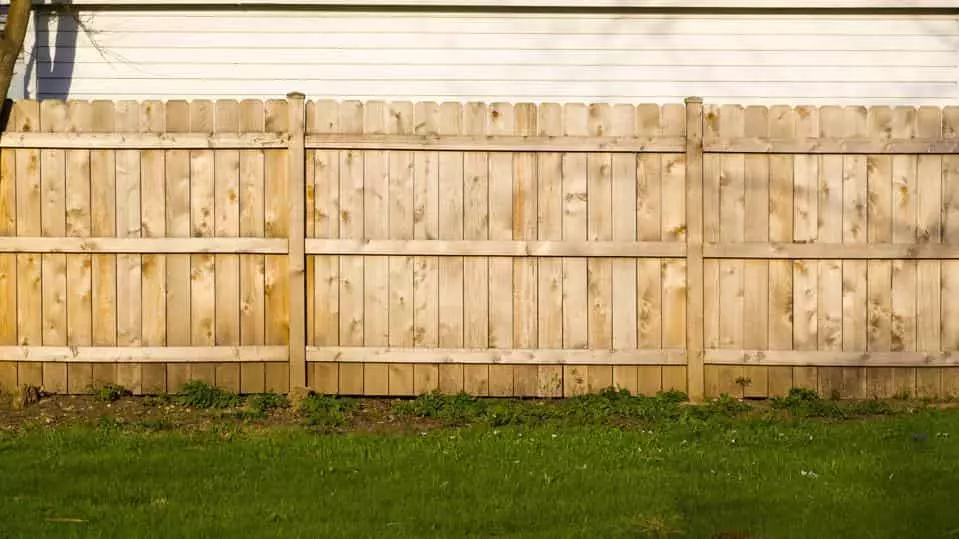Table of Contents
If you wish to maintain the backyard, the lawn is shielded from the prying eyes of neighbors or other unknown people in this case providing Privacy fencing is the most suitable choice for you.
The privacy fencing can present an attractive background and offer private space for plantation uses because the height of the privacy fence can be given a minimum of 4 to 6 feet in a height-wise direction.
The privacy fencing needs a considerable investment so you can prepare a budget carefully and also consider additional costs like excavation, installation, permits, and finish.
It is a valuable investment because it improves the value of a property, fencing creates a property more attractive, and similarly improves your own pleasure in the backyard.
The cost of fencing relies upon various elements such as the size of the fence, style of fencing, intention of installing fencing, and material of fencing, and also comfortable to change as the wish of remains exterior of a property.
1. How to Install Privacy Fence In Backyard
Installation of privacy fences in the backyard is commonly accomplished in four steps as follows:
a. Post Installation
b. Rail Hanging
c. Picket hanging
d. Gate installation
a. Post-installation
Post-installation is the process of digging holes up to 2′ into the ground and utilizing cement for docking the posts.
b. Rail hanging
Privacy fences contain three rails at a place bottom, one in the middle part, and one at the top part.
c. Picket hanging
Pickets are the stakes or posts which operate vertically along with the privacy fencing.
d. Gate installation
If you want a gate in your backyard then you can try it otherwise is not compulsory.

2. Choosing Building Material for Your Privacy Fence
You can select building material according to your wish for privacy fences, most familiar three types of materials are described below:
a. Wood material for privacy fences.
b. The bamboo building material for the privacy fence.
c. Vinyl material for privacy fence Wood.
✔ Wood
Wood is a traditional building material for fences, also wood suits every type of landscape and home. You can select among the different wood species for fencings such as spruce, pine, fir, cedar, white oak, and western red cedar.
But this fence needed periodic maintenance to save against rot, pest attack, warping, and other damage and decays.

✔ Vinyl (PVC)
If you are peeking for the low maintenance then you can add PVC as fencing materials. Because PVC is durable and stronger than wood and does not directly attract pests, rot, and wrap.
Also easy to wash just take water and detergent or soapy water and remove all dust and dirt from the fence, you can’t paint its exterior but this fence is obtainable in a wide range of color and texture finishes.

✔ Bamboo
Bamboo building material is environmentally and budget-friendly, in this fence, bamboo rods are jointly tight connected for making a privacy fence which allows to fully block the inner view.
Also bamboo material perfectly suits the aesthetic of a traditional landscape, and the bamboo fences make your garden, and backyard a much more enjoyable and comfortable place to be.

3. Importance of Fences
Here is the importance of fences is as follows:
✔ It provides security to buildings.
✔ It creates a boundary.
✔ It provides privacy and adds aesthetic beauty.
✔ It helps to increase the value of the property.
4. Uses of Fences
The uses of the fences are as follows:
✔ It is used to create boundaries.
✔ It is used to increase the security of property.
✔ It is used to add aesthetic beauty.
✔ It is used as a sound barrier.
5. Advantages of Fences
The advantages of fences are as follows:
✔ Noise reduction
✔ Security
✔ Containment
✔ Privacy
6. Disadvantages of Fences
The disadvantages of fences are as follows:
✔ Needs regular maintenance.
✔ Expensive
✔ Can create conflict with neighbors.
| Read Also: Difference Between Wood and Timber |

